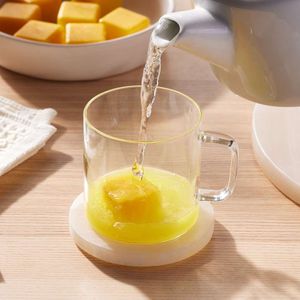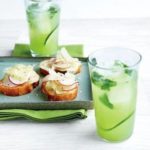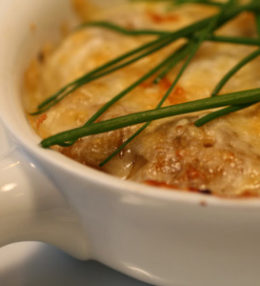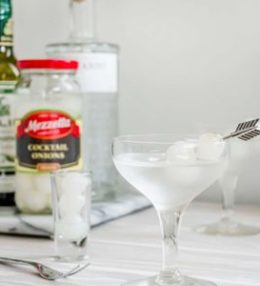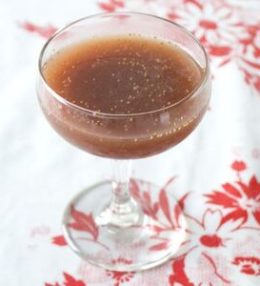
How We Made This Diabetes-Friendly
1. Used antioxidant-rich ingredients. A 2023 study published in Heliyon suggests that foods such as turmeric and ginger contain antioxidant properties that can help with glucose metabolism, improve release of insulin and decrease insulin resistance. While it’s helpful to include these flavor-enhancing ingredients, it’s difficult to eat them in large-enough quantities that they provide substantial therapeutic benefits. Therefore, these foods aren’t a replacement for treatment recommended by your health care team, but they can support a diabetes-friendly eating pattern.
2. Used honey, which has additional nutrients, as our source of sweetness. Table sugar is a type of refined sugar that offers no nutritional benefits. Honey, on the other hand, is a natural sugar that offers sweetness, as well as zinc, iron and antioxidants that have health-protective benefits. Its anti-inflammatory properties may also help lessen the chronic inflammation that often accompanies type 2 diabetes. Since honey is still considered an added sugar, it’s helpful to be cautious of the amount you’re eating, especially when watching your blood sugar levels.
3. Used lemon for punchy citrus flavor. Lemon juice offers bright acidity that’s refreshing, but also satisfying. It also packs some vitamin C, an antioxidant that can help support immunity, to help fight off colds and infection.
Tips from the Test Kitchen
Fresh lemons are sometimes expensive; can I use bottled lemon juice in place of fresh lemon juice?
Bottled lemon juice can be a handy swap when cooking, but it may not be the best solution for this beverage. The pasteurization process gives bottled lemon juice a muted taste and aroma compared to fresh-squeezed, and some bottled lemon juice contains additives to keep it shelf stable. We’re “#teamfresh,” but If you do buy the bottled stuff, look for a bottle labeled “100% pure juice” with lemon juice as the only ingredient.
I prefer my beverages unsweetened. Is the honey necessary, or can I leave it out?
Turmeric and ginger contribute earthiness and a hint of bitterness, while lemon juice adds some acidity. A small amount of honey perfectly balances the overall flavor profile. While you can reduce the honey or omit it entirely, doing so may result in the other flavors becoming more pronounced and intense.
This sounds like a great addition to my daily water routine, but can I add room-temperature water instead of hot water?
Absolutely! It will just take a bit longer for your cube to melt in room-temperature water, so plan accordingly.
Additional reporting by Sara Haas, RDN, LDN.
Brie Goldman
How We Made This Diabetes-Friendly 1. Used antioxidant-rich ingredients. A 2023 study published in Heliyon suggests that foods such as turmeric and ginger contain antioxidant properties that can help with glucose metabolism, improve release of insulin and decrease insulin resistance. While it’s helpful to include these flavor-enhancing ingredients, it’s difficult to eat them in large-enough quantities that they provide substantial therapeutic benefits. Therefore, these foods aren’t a replacement for treatment recommended by your health care team, but they can support a diabetes-friendly eating pattern. 2. Used honey, which has additional nutrients, as our source of sweetness. Table sugar is a type of refined sugar that offers no nutritional benefits. Honey, on the other hand, is a natural sugar that offers sweetness, as well as zinc, iron and antioxidants that have health-protective benefits. Its anti-inflammatory properties may also help lessen the chronic inflammation that often accompanies type 2 diabetes. Since honey is still considered an added sugar, it’s helpful to be cautious of the amount you’re eating, especially when watching your blood sugar levels. 3. Used lemon for punchy citrus flavor. Lemon juice offers bright acidity that’s refreshing, but also satisfying. It also packs some vitamin C, an antioxidant that can help support immunity, to help fight off colds and infection. Tips from the Test Kitchen Fresh lemons are sometimes expensive; can I use bottled lemon juice in place of fresh lemon juice? Bottled lemon juice can be a handy swap when cooking, but it may not be the best solution for this beverage. The pasteurization process gives bottled lemon juice a muted taste and aroma compared to fresh-squeezed, and some bottled lemon juice contains additives to keep it shelf stable. We’re “#teamfresh,” but If you do buy the bottled stuff, look for a bottle labeled “100% pure juice” with lemon juice as the only ingredient. I prefer my beverages unsweetened. Is the honey necessary, or can I leave it out? Turmeric and ginger contribute earthiness and a hint of bitterness, while lemon juice adds some acidity. A small amount of honey perfectly balances the overall flavor profile. While you can reduce the honey or omit it entirely, doing so may result in the other flavors becoming more pronounced and intense. This sounds like a great addition to my daily water routine, but can I add room-temperature water instead of hot water? Absolutely! It will just take a bit longer for your cube to melt in room-temperature water, so plan accordingly. Additional reporting by Sara Haas, RDN, LDN. Brie Goldman
Frozen Lemon-Ginger-Turmeric Shots


